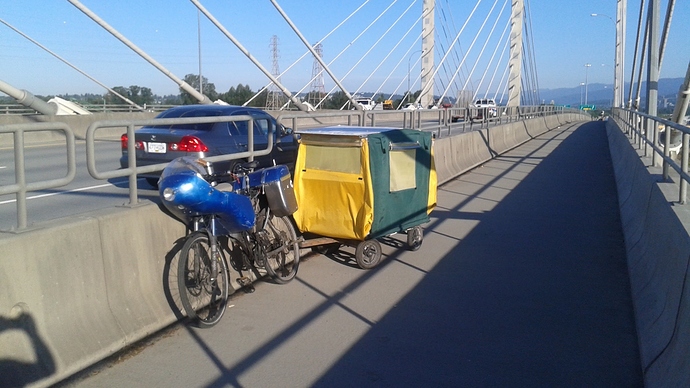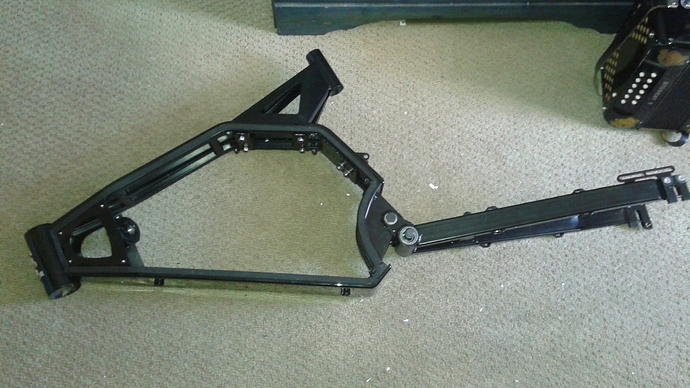Hi. I’m a new member, and my current project is to build a new electric
bike.
I’m basing it around this frame, which is made of steel and specifically
for DIY electric builds.
The large space inside the frame is for the battery and controller. The
frame is intended for use with a powerful hub motor in the rear hub, but I
will instead use a smaller mid-drive motor, inside the frame triangle.
The picture below shows the rough arrangement I want for the motor. As the
(red) motor rotates, it turns a small freewheel, which drives the crankset
via a short chain.
If you look closely, you’ll see that the motor axle is held by a small
aluminum plate, that bolts onto the larger 3-arm plate. This smaller plate
will have to be made of steel in the working version, since there is a lot
of torque on the motor axle (60 Nm). The manufacturer recommends using
steel plate that’s 5-6 mm thick.
The hardest part of this project is to cut the 10 mm-wide slot in this
steel plate, for the motor axle to slide into. The only way I can see to
do it would be to use a milling machine. (If anyone has a better idea, let
me know!) I haven’t used this machine before, so will need someone to show
me how it works.
For some background information about what this bike is for, I’ll show a
couple of pictures of my old bike, recently dismantled. (The frame was
aluminum, and had gotten too old to be safe.)
It had a mid-drive motor as well, although smaller and much noisier. The
new one is larger, and more powerful as well as quieter. I used it for
commuting, shopping, and touring. When touring I would often bring my
camping trailer to sleep in.
The old bike was barely able (If I’m honest) to tow the trailer over rough
ground, and up the steepest hills. The new one should be much better, as
well as far more durable.
Thanks for reading, and let me know if you have any ideas, or can show me
how to use the milling machine!







